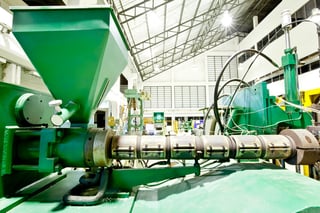When you are preparing to inject molding you need to establish process parameters based on information about the mold capabilities. This will mean you will process from a plastics-point-of-view, verifying and then proving over time, and optimizing setup times with mold modifications.
This is a called a systematic process optimization, with single or multiple cavities, used by cold runner or hot runner molds. It can be used by amorphous or semi-crystalline thermoplastic materials. All of these decisions are made using data.
The procedure begins by setting or adjusting for the desired temperatures: drying, melt, and mold. Next, you develop the injection phase by filling, packing, and holding. You’ll want to optimize cooling time and prove capability.
During the injection phase, the goal of fill is to put 95 to 98 percent of the shot into the mold as fast as the plastic and tool will allow. We are not recommending the use of full system pressure. Make sure all shots are short!
Increase fill velocity to 90 to 95% of machine maximum. The goal is to fill as fast as the mold, machine and material are capable of utilizing. This may ultimately be a slow process! Set screw recovery time such that the screw stops two to four seconds before the mold opens.
Occasionally two fill speeds are required: to mask gate blush and to prevent ‘bouncing’ at transfer from fill to pack. Use a low fill velocity just long enough to get the melt front past the blush area, then use high fill velocity for the rest of fill.
After you achieved your desired fill speed start to increase the shot size or lower your transfer position in small increments to 95 to 98 percent full. Do not adjust pressure or velocity at this point.
Save samples at each increment, labeling each at every level of fill. Look for changes in balance, gate blush, jetting, etc. To create a melt flow curve decrease the fill velocity in 10 to 12 steps, from the fastest to as slow as possible. Don’t adjust size or fill, it is normal for the shot to become smaller.
Record fill time and peak hydraulic or plastic pressure for each velocity, making sure to save and label samples from each velocity.
You have to begin to mold parts as short as possible, without causing sticking. Make sure pack and hold pressures are set to zero. You might have to reduce pack or hold volume or speed, or remove Pack and Hold Time and add it to cooling time for consistent cycle time.
Make sure the cavity is not filled by Intrusion during plasticizing, and make sure there is sufficient time for gate freeze.
Inspect your samples and evaluate aesthetic characteristics and fill balance. You must have enough hydraulic pressure available to maintain consistent Fill Times.
Ask These Questions:
- Would more venting allow faster filling?
- Is the gate land too long?
- Move or redesign the gate to prevent ‘jetting’!
- Is the process ‘pressure limited’?
- Flash should not occur at 99 percent full.
- Properly built mold?
- Properly clamped mold?

Cooling
During cooling it’s important to keep coolant channels clean. Scale and other contamination will act as insulation between the coolant and the mold. Make sure you have turbulent flow in all cooling channels, with direct heat removal at thick sections and at inside corners, and that all cavities have equal heat removal.
Higher melt temperatures will mean longer cooling times. To prove capability allow samples to cool for 24 hours, minimum. 80% of the shrink will come in the first hour from molding. You should cool for 48 to 72 hours or more for parts that have been molded from crystalline resins.
Conduct a pilot run using the best process parameters. Employ increased inspection levels, using several different material lots. Use regrind at typical production levels.
Perform visual, dimensional and physical performance evaluations. Select the best process parameters using the sample evaluations.
Material lot and regrind level variations are to determine the ‘robustness’ of the process!
This procedure works more than 90% of all molds and materials. Each step builds on the previous work, and will eliminates future issues.
Pack & Hold
After the molded parts(s) are 95 - 98% full you can start adding the Pack pressure. Start in small increments and with every second of time you add to the pack time you should remove that same second form the Cooling timer to maintain the same cycle time. When you achieve your desired part weight and part appearance start adding the Hold phase of your process.
This phase is to only hold the screw position in one place not moving forward (placing more material in the tool) or being pushed back by the plastic pressure built up in the tool. With this step we are looking for a gate seal that prevents the plastic in the tool from squirting back out the gate. Again the time you added to the Hold timer will need to be reduced from the cooling timer to maintain the desired cycle time.


